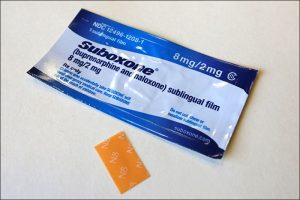Drug abuse is a sad reality that we have to accept! Medical drugs are created to treat specific addictions. And sometimes, in the process of healing one addiction, patients end up getting addicted to another substance. It holds true for Suboxone addiction as well. Though this drug helps to treat opioid dependence, it has also resulted in several problems.
Patients can misuse this medication. If consumed without any measure for a long time, it leads to addiction. Most people do not realize this fact. Whether you are taking the drug in strips or tablets, the dangers of overuse always stay. Suboxone has been instrumental in rapid opiate detoxification in many countries. Do you want to ensure that you do not fall into an addiction? If yes, you need to know more about Suboxone and the way it works.
Suboxone And Its Uses
This drug was released back in 2002. In fact, Suboxone was introduced along with Subutex, a similar medicine. These drugs were prescribed to aid people to curb their addiction to opioid medications. Suboxone helps to treat people with Oxycodone and heroin addiction as well. The medicine blocks the impact of these and opioid drugs in the patient’s body. It helps to manage the drug cravings and withdrawal symptoms as well. After consumption, patients can reduce their opiate intake organically.
Despite being a useful drug, Suboxone can turn into an addiction. Patients should not be consuming it for a long span of time, without doctor intervention. The approach is essential here. Patients, who use Suboxone for healing from opioid addiction, should monitor their progress. As the dependence gradually lessens, patients should reduce the intake of Suboxone, to prevent another addiction.
Know The Withdrawal Symptoms
Many kinds of detox bring with them withdrawal symptoms. Sometimes, these symptoms are severe that make patient’s go paranoid. They misinterpret as signs of any other ailment. When you know your withdrawal symptoms, you can manage your recovery better. The Suboxone withdrawal symptoms are as follows:
- Body aches and muscle pains
- Poor concentration
- A constant feeling of nausea
- Acute cravings
- Drowsiness and insomnia
- Sudden chills
- Prolonged cluster headaches
- Digestion issues
- Irritation, anxiety, and depression
- Frequent sweating
The symptoms vary from one person to the other, depending entirely on the degree of addiction.
Understanding The Withdrawal Effects With Time
A detox is painful and challenging initially. It is because the brain is getting used to new programming. Aside from Vicodin Withdrawal, the initial 72 hours are tough on most Suboxone addicts. Here most of the physical symptoms such as headaches, muscle pains, and nausea start to show. As the first week passes by, these physical symptoms usually decrease. The body does experience some pain and aches, including mood swings and cravings. But the signs are not acute.
Depression as a symptom kicks in the second week. And when a month passes by patients might feel prolonged depression and pointless cravings. And this is a crucial time! Sometimes, the patient’s relapse back to their addiction not being able to cope up with the withdrawal symptoms. It is the time for help, support, and therapy.
Suboxone Addiction Recovery And Therapy
Being sober and free from addiction is a dream for most Suboxone and other drug abusers and addicts. The journey is laden with challenges. And it takes a considerable amount of time. Therapy is crucial and helps a person to cope up with the emotional and physical withdrawal symptoms. Today, there are leading and experienced institutions specializing in drug addiction detox therapy that they are willing to help. The treatment is individual specific. There’s no one size fits all approach that is applied.
However, in the majority of Suboxone addiction detox therapy, the therapies and healing modality used are as follows:
1. A thorough analysis
It is the first step and decides the course of the therapy and detox treatment. The therapist or therapy center do an in-depth examination of the addict’s background, physical conditions, mental make-up, emotional state and social history center. Here aspects like behavioral disorders that result from genetic conditions or as a result of trauma get revealed. Therapists also recognize if the patient already has an underlying illness or psychological problem that needs treatment.
2. The individual treatment schedule
Based on all these findings a potential therapy flow-chart is created. The therapy center considers the patient’s objective for recovery and allows a selected time frame for the healing process. This timeline can is extended, or the person can get healed before the estimated time as well, based on the way he/she copes with the therapy.
3. Individual therapy
It is essential for patients to meet their therapist on a regular basis. It is usually a one-on-one meeting. The one-on-one setting helps the patient to confide in their therapist better. The setting is perfect for the patient to feel relaxed and own up to his/her vulnerabilities. That way the therapist will be able to heal a patient better.
4. Individual case management
Case management is essential. It helps to understand both the patient’s addiction and the progress. Also, this helps the therapist to understand the patient’s coping skills. It helps in formulating the detox treatment plan as well.
5. The group therapy meet-ups
Usually, known as the community meetings and group therapy session, it helps in long-term drug addiction detox. When people get to see other individuals who are working towards a drug-free life, they get motivated. They don’t feel alone. Also, the healing and recovery stories are motivating and provide the necessary mental support.
6. The holistic therapies
Holistic therapies in the recent times have proven to be useful in drug addiction cure. The patient can dabble with meditation, hypnotherapy, meditation, acupuncture and many more. The use of herbs is also commendable. A change in diet and having an exercise chart also works wonders. However, the patient should choose a holistic therapy type that suits his/her nature and complements the coping skills.
Complete recovery from Suboxone addiction comes from a personal commitment to a new improvement and detox routine. It also depends on the help and assistance that a person gets from his/her family, friends and peer groups. Also, patients should stay away from situations that invoke anxiety and other dense emotions. It will help them to sustain the after-effects of the therapy until staying away from Suboxone becomes a habit. Reaching out to a rehabilitation facility that provides opiate detoxification solutions is a smart call.








